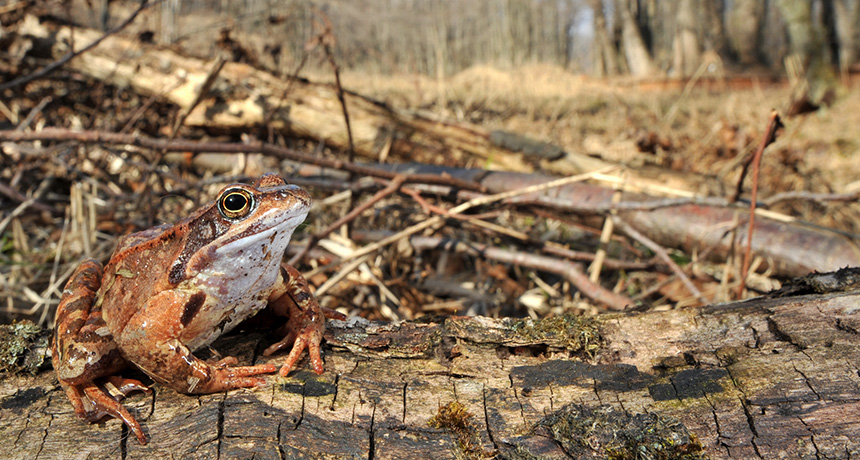Whether froglets switch sexes distinguishes ‘sex races’
Amphibian starts all female in one region of Europe; in another, with gonads of either sex

OFF TO THE RACES What’s called the common frog in Europe (shown here in Switzerland) is one widespread species even though different races vary in their potentially sex-reversing lifestyles.
Andreas Meyer







